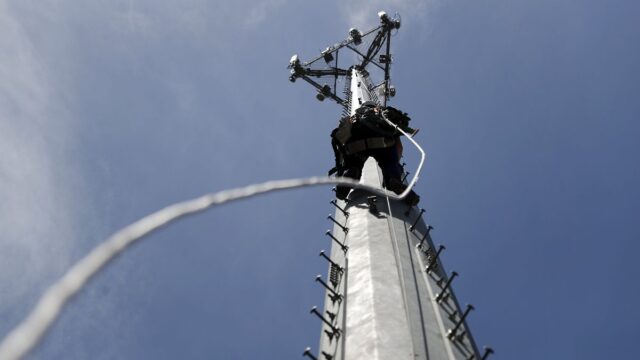Once the 6G network specifications are ready, they will be transposed into standards in all participating regions: the European Union, the United States, India, Japan, China and South Korea.
Telecommunications operators in the European Union hope that the rules of the 6G mobile network for the next generation of mobile networks be ready by 2029 or 2030, according to Jan Ellsberger, new director general of the European Telecommunications Standards Institute, ETSI.
Ellsberger, former vice president of the Swedish telecommunications company Ericsson, told ‘Euronews’ in an interview that preparatory work on this will begin soon. This comes as the European Commission’s current targets for 5G network rollout across the EU bloc remain unfulfilled by the 27 EU Member States.
“The industry is targeting 2029 or 2030 as the deadline for the first publication of 6G network standards. That is the ambition,” he said, adding that “the 6G network It won’t be a big revolution.“, but “a smooth evolution of 5G“.
The ETSI, which has more than 950 member organizations in 65 different countries and is responsible for establish globally applicable standardsis one of the organizations that promote the global standardization of telecommunications within the 3GPP, a global consortium that develops protocols for mobile telecommunications.
Once the 6G network specifications are ready, will be transposed into standards in all participating regions: the European Union, the United States, India, Japan, China and South Korea.
In its Report on the State of the Digital Decade, published in June, the European Commission stated that its goal for 2023, of achieving universal coverage with 5G, still unfulfilled.
In January, a European Union official warned that the limited deployment of the 5G network in Europe means that other technologies that depend on a internet service fast, as is the case of artificial intelligence, will be affected.
Similarly, the European Association of Public Telecommunications Network Operators, ETNO, warned in a January report that a significant additional investment in deployment before the EU goals of reaching full 5G and gigabit coverage by the end of this decade are achieved.
Artificial Intelligence Standards
The European Commission’s requests for standardization represent only a small part of the work from ETSI, since around 70% comes from the industry itself.
According to Ellsberger, Brussels is expected to focus on normalization in the coming years. “Now we have to apply all adopted legislationand that regulation needs standards. The ETSI will contribute its part of that work,” he stated.
One of the examples that emerged from the last European Commission is the Artificial Intelligence Law. That is, the strict community bloc rules to regulate high-risk apps, which came into effect earlier this month.
The call for standardization in support of the European Union’s policy on Artificial Intelligence It was published in May of last year. and was delivered to CEN and CENELEC, the other two EU standardization bodies, with ETSI mentioned as a collaborator.
According to Ellsberger, the development of standards may require a time frame of between a few months and several yearsdepending on the topic.
“Normalization is a voluntary industry request. The greater the commitment of the industrythe faster it will go,” he said.
Another of ETSI’s priorities in its new mandate is study new technologiesincluding quantum, as well as developing initiatives around skills to train the next generations.







